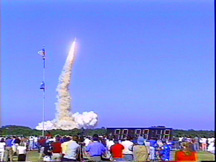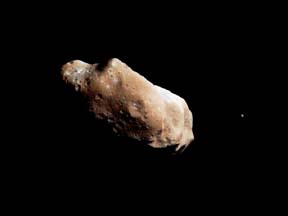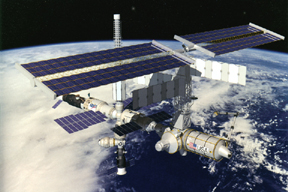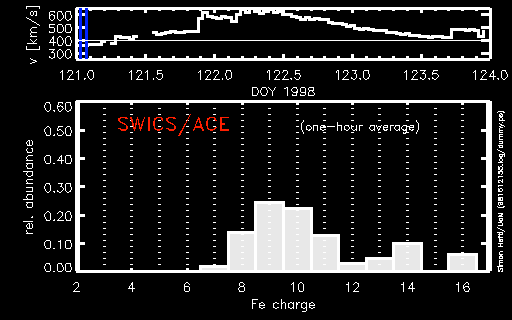This is an image of the Ring Nebula, looking as if from the end of a
barrel.
Click on image for full size
Hubble Space Telescope image courtesy of STScI
Hubble Adds a New Dimension to Nebula
News story originally written on January 7, 1999
Scientists have used the Hubble Space Telescope to take a closer look at
the Ring Nebula (also known as M57). The
nebula was discovered over two
hundred years ago but scientists have found something new. It's not
really a ring--it's a cylinder that we see from the end.
"My astronomy books taught me that it was a round sphere of expanding
gas," recalls Howard Bond, an astronomer for the Heritage Project.
The cylinder was formed from material ejected from a dying star. The
material first formed a ring around the star, which slowed down new
material trying to expand. The easiest way for the material to leave was
through the open areas above and below the ring. This continued and
created the cylinder-shape that the nebula has today.
You might also be interested in:

It was another exciting and frustrating year for the space science program. It seemed that every step forward led to one backwards. Either way, NASA led the way to a great century of discovery. Unfortunately,
...more
A mission that would have sent a probe to comet Tempel 1 has been postponed indefinitely. This mission, the first of it's kind, would have landed on the comet in 2005. Unfortunately, other projects have
...more
The Space Shuttle Discovery lifted off from Kennedy Space Center at 2:19 p.m. EST, October 29th. The sky was clear and the weather was great as Discovery took 8 1/2 minutes to reach orbit for the Unitied
...more
A moon was discovered orbiting the asteroid, Eugenia. This is only the second time in history that a satellite has been seen circling an asteroid. A special mirror allowed scientists to find the moon
...more
Will Russia ever put the service module for the International Space Station in space? NASA officials are demanding an answer from the Russian government. The necessary service module is currently waiting
...more
During a period of about two days in early May, 1998, the ACE spacecraft was immersed in plasma associated with a coronal mass ejection (CME). The SWICS instrument on ACE, which determines unambiguously
...more
J.S. Maini of the Canadian Forest Service has referred to forests as the "heart and lungs of the world." Forests reduce soil erosion, maintain water quality, contribute to atmospheric humidity and cloud
...more









